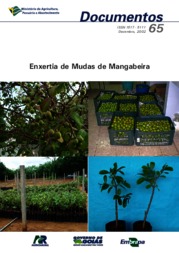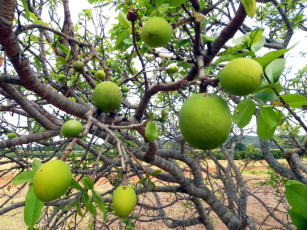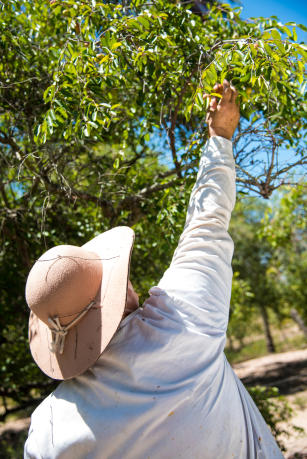Embrapa Cerrados
Enxertia de mudas de mangabeira.
 Busca de Publicações
Busca de Publicações
Enxertia de mudas de mangabeira.
Author(s): PEREIRA, E. B. C.; PEREIRA, A. V.; CHARCHAR, M. J. d'A.; PACHECO, A.; JUNQUEIRA, N. T. V.; FIALHO, J. de F.
Summary: ABSTRACT: The mangaba (Hancornia spp.) is a native fruit and latex tree of wide spread occurrence in the Brazilian Savannh, Pantanal, Amazon, and Atlantic Coast from Amapá to Espírito Santo States. It is also found in the neighbouring countries of Paraguai, Bolívia, Peru and Venezuela. This specie has a great potential due to its low caloric fruits which present a special taste and flavor and are much appreciated by the local population such as fresh fruits, juices, icecream, fruit-jelly and liqueur. Its post harvest short shelf fruit life and the large distance from the consumers centers can not support the increasing demand for this fruit, leading farmers to interest in its cultivation. Hence, much research is needed, mainly the appropriate sexual and vegetative propagartion methods. Like many other fruit trees, the latest method seems to be the first step for the domestication and cultivation of native species. In this way, grafting and budding techniques are very important for fruit tree cloning and breeding. Therefore, the objective of this paper was to present the latest results about the potential and use of grafting and budding on mangaba, and to ofter technical advice to the breeders and the farmers dealing with this specie. Many aspects about rootstocks production, grafting and budding approaches are discussed, including the nursey management practices, such as seed and sowing details, recipients and substrates, manuring, watering, pest and disease control.
Publication year: 2002
Types of publication: Booklets
Unit: Embrapa Cerrados



